How would you like it if this was your home?
A Sherman tank demolishes historic homes in West Oakland for a postal distribution center.
.
And how would you like it if this was your neighborhood?
Construction of the Cypres Freeway through West Oakland in the late 1950s destroyed entire blocks of homes, uprooting thousands of people, mostly African American.
Urban planning in the U.S. historically has not been kind to poor and minority communities. Under the banner of urban renewal and modernization, homes owned by people who were not wealthy enough to pay for their upkeep were viewed as blighted and marked for removal to make way for new housing, transportation and other municipal plans. West Oakland is a prime example of a once vibrant multi-ethnic neighborhood that through a series of regional planning decisions had the economic, environmental and social rug pulled from under it.
However, while there is much to be said about the inherent cultural and political conditions that led to the decay of a once thriving working- and middle-class community, this is ultimately a story of how social justice and environmental justice go hand in hand, and how addressing them together can lead to the most unlikely alliances and bring about redemption and transformation.
Let me first introduce you to the hero of this story, Marcel Diallo:
Rebirth of ‘Village Bottoms’
CNN’s Soledad O’Brien meets with Marcel Diallo, a community activist in Oakland’s “Village Bottoms.” Watch here.
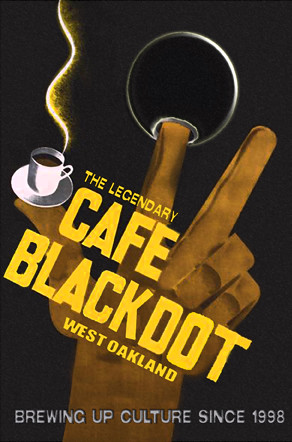 In 2000, a group of young black artists, entrepreneurs, and community organizers got together with the vision of restoring the historic Village Bottoms neighborhood and turning West Oakland once again into a vibrant commercial and residential hub. Led by Marcel Diallo, a descendant of original Oakland Point Wharf dwellers when it was the bustling Western Terminus of the transcontinental railroad line in the late 1800s, they purchased old buildings and lots on Pine Street, among them what are now the Black New World Club and the Black Dot Cafe artist collective.
In 2000, a group of young black artists, entrepreneurs, and community organizers got together with the vision of restoring the historic Village Bottoms neighborhood and turning West Oakland once again into a vibrant commercial and residential hub. Led by Marcel Diallo, a descendant of original Oakland Point Wharf dwellers when it was the bustling Western Terminus of the transcontinental railroad line in the late 1800s, they purchased old buildings and lots on Pine Street, among them what are now the Black New World Club and the Black Dot Cafe artist collective.
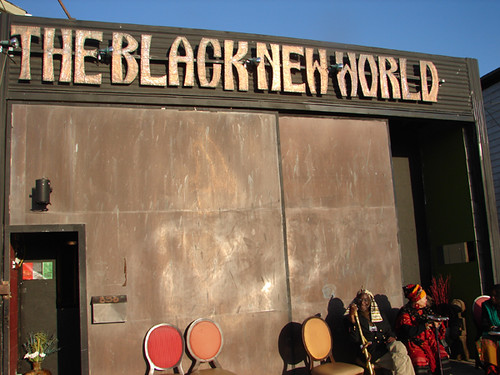 Set up to be a founders buyer club that would give long-time West Oakland residents and young artists and entrepreneurs associated with Village Bottoms a chance to reinvest in their neighborhood, the last 8 years have seen a revitalized Pine Street corridor. New storefronts and local residents have been moving into refurbished historic buildings, rekindling the kind of community spirit necessary to reverse decades of urban blight. However, much work remains and investment is needed in turning large vacant industrial sites into an integrated urban village with plazas, bike paths, gardens and cultural centers.
Set up to be a founders buyer club that would give long-time West Oakland residents and young artists and entrepreneurs associated with Village Bottoms a chance to reinvest in their neighborhood, the last 8 years have seen a revitalized Pine Street corridor. New storefronts and local residents have been moving into refurbished historic buildings, rekindling the kind of community spirit necessary to reverse decades of urban blight. However, much work remains and investment is needed in turning large vacant industrial sites into an integrated urban village with plazas, bike paths, gardens and cultural centers.
Over the last few weeks I’ve had the great pleasure of volunteering for Ecocity Builders, a non-profit organization dedicated to reshaping cities for the long-term health of human and natural systems, to draw up a plan to create an official Village Bottoms Cultural District. (I did the historic research and an interview with Marcel) This plan would consolidate much of the “bottoms up” planning work that has taken place in the neighborhood since 2000 with ecologically-minded urban planning and landscaping.
That’s the rhythm of Village Bottoms: Build the community from the bottom up, but it also needs a little bit of top down to squeeze the middle.
Everybody needs a black cultural district. Just like everybody needs a Chinatown.
– Marcel Diallo.
But why did they leave in the first place? How did West Oakland get cut off from the social and economic fabric that has made the Bay Area one of the wealthiest and cleanest urban centers in the last half century?
Well, to begin with, you build a bridge…
The construction of the Bay Bridge in the mid-1930s was a lethal blow to the ferry traffic so vital to the Seventh Street corridor. Not only did it eliminate a wide range of local jobs dependent on the ferry industry, but it negatively impacted businesses on Seventh Street, the very lifeblood of West Oakland commerce.
Then you build a Highway right through the neighborhood…
Built in the 1950’s, the construction of the Cypress Freeway effectively severed West Oakland from the downtown and from Oakland’s more affluent communities. In order to build the freeway, officials uprooted 600 families and dozens of businesses that stood in the way of construction. The noise and smell from the freeway changed the face of the neighborhood. Some studies showed that residents of West Oakland began to develop a higher incidence of asthma and some cancers than their counterparts in other areas of the city.
There’s the aforementioned postal facility…
The construction of a massive postal distribution facility, along with a freeway and elevated train, ushered in a new era for West Oakland in the 1960s. With its parking and storage lots, the postal facility took up 12 square blocks and contributed to increased pollution in an area already plagued with health problems. When it was built on 7th Street from Wood to Peralta, it displaced every structure on the street’s south side.
Top it off with above ground regional train tracks right along the central business artery…
In the 1960s, the Bay Area Rapid Transit District, also known as BART, was instrumental in the decline of West Oakland’s struggling 7th Street neighborhood. Early that decade, BART proposed building a track down the center of 7th Street to service shoppers and commuters traveling to downtown San Francisco. Many in the neighborhood believed that BART’s District Board was heavily weighted in favor of San Francisco’s business interests, with poor minority neighbors bearing the brunt of the impact promised by a significant BART undertaking.
Add to that the USHA’s urban renewal project throughout the 1940s, 1950s and 1960s, turning historic neighborhoods designated as ‘slum units’ into housing projects, and redlining, an unofficial private sector practice to deny or increase the cost of services such as banking, insurance, or access to jobs and health care to residents in certain predetermined, mostly black inner city neighborhoods, and you can see how the odds were stacked against West Oakland.
But as you saw in the CNN video above, the story doesn’t end there, which is a good reminder to all of us involved in various aspects of the environmental and social justice movement that no matter how messed up a situation looks, it is often just a handful of people who can change a seemingly hopeless situation.
Only an artist could look at a scrap yard and see a future cultural district.
– Marcel Diallo
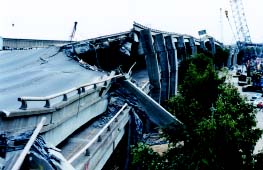 Or sometimes, mother nature changes the dynamics. After the devastating 1989 Loma Prieta earthquake and the collapse of the Cypress Freeway, Caltrans wanted to rebuild the freeway in the same location. Unlike in the past, however, the planners got an earful from local activists, who under the name Citizens Emergency Relief Team (CERT) fought for a different route that would minimize impact on West Oakland. This created the opportunity for a dialogue over where and how the freeway would be rebuilt, and for the first time in the history of West Oakland, the local community had a say in what was going to be put in their backyard and where. CERT not only was responsible for the new route, but it changed the way Caltrans looked at their big regional projects. It’s worth reading the whole Federal Highway Administration’s Cypress Freeway Replacement Project ENVIRONMENTAL JUSTICE Study, but here’s one excerpt:
Or sometimes, mother nature changes the dynamics. After the devastating 1989 Loma Prieta earthquake and the collapse of the Cypress Freeway, Caltrans wanted to rebuild the freeway in the same location. Unlike in the past, however, the planners got an earful from local activists, who under the name Citizens Emergency Relief Team (CERT) fought for a different route that would minimize impact on West Oakland. This created the opportunity for a dialogue over where and how the freeway would be rebuilt, and for the first time in the history of West Oakland, the local community had a say in what was going to be put in their backyard and where. CERT not only was responsible for the new route, but it changed the way Caltrans looked at their big regional projects. It’s worth reading the whole Federal Highway Administration’s Cypress Freeway Replacement Project ENVIRONMENTAL JUSTICE Study, but here’s one excerpt:
Lessons Learned
Representatives of Low-Income and Minority Communities can be Resourceful and Effective Partners. All too often, transportation agencies view “the community” as a collection of individuals lacking the knowledge, training, and influence to play a substantive role in project planning, design, and implementation. In the case of the Cypress Freeway, such an outlook would have grossly underestimated the capacity of West Oakland community representatives involved with the Cypress Freeway Replacement Project.
It is in this spirit of partnership that the Village Bottoms neighborhood which is adjacent to the new Cypress Freeway is being re-envisioned and developed. When the local community gets to engage directly with developers and investors, everybody benefits, for it is the heart and soul of a place that makes it both livable and a destination. However, with new improvements come new challenges. One of them is to keep a re-emerging neighborhood from getting gentrified and losing the people who helped to build it in the first place.
The best way to measure success is how well you get your own gentry to gentrify, how you take care of the people less fortunate.– Marcel Diallo
What Marcel does to engage all the different parties vying for precious real estate in an increasingly attractive neighborhood is radical though not surprising: He talks to people. That’s how he forms partnerships with everyone from the developer who bought the old Central Station that is bringing 1,500 new residences to the neighborhood to the young engineer who bought and refurbished a beautiful 3-story house on 11th @ Wood. Said Marcel: “Right as he purchased the land I engaged him immediately and we worked out a first right of refusal on his building, because I knew if I didn’t it would go to an outside buyer. A longtime local educator and activist came in and bought it.”
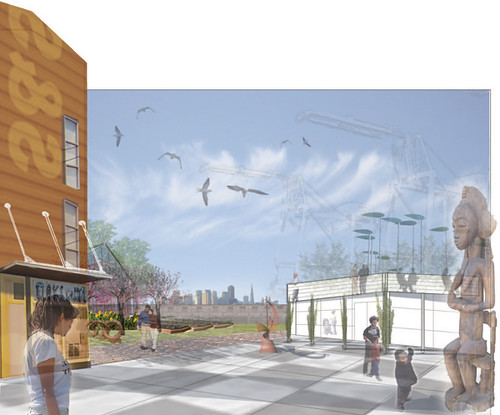
As the rebuilding and transformation of Village Bottoms continues, it is only fitting that the neighborhood’s cultural ambassadors are working with a group of ecocity visionaries to draft a plan for an Oakland Green City pilot program. Combining a focus on small, locally-owned businesses with urban agriculture, pedestrian and bicycle greenways, and easy access to public transportation, the result is not only a closer-knit community but a much-reduced carbon footprint. Whether it’s planting vegetables on an old wrecking yard or a bike path through former ironworks, a theme emerges: In a case not only of ecological but perhaps poetic justice, the communities most ravaged by traditional-style urban renewal now get to write the first chapter in the annals of 21st century American Ecocities.
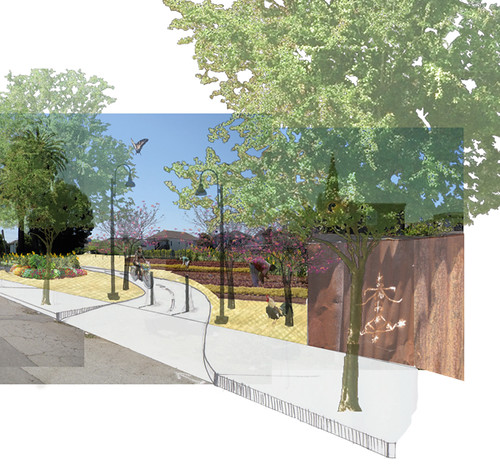
=======


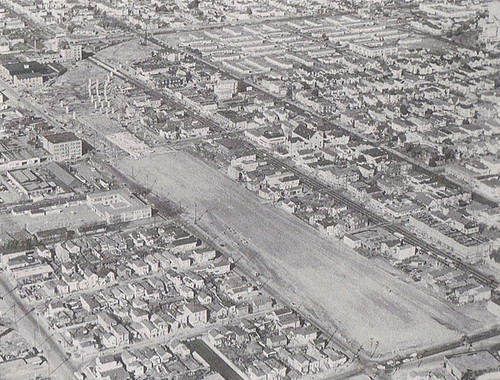

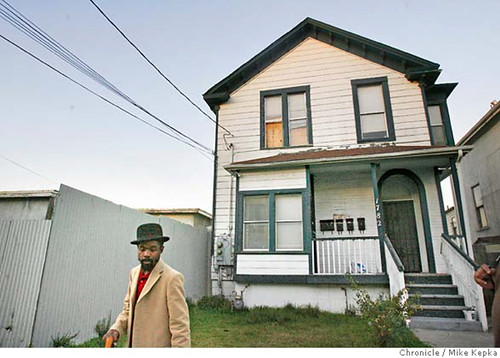
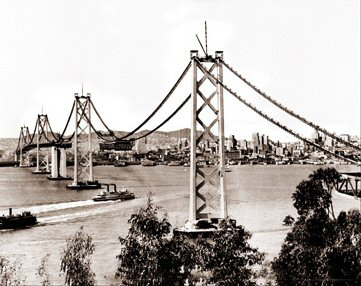
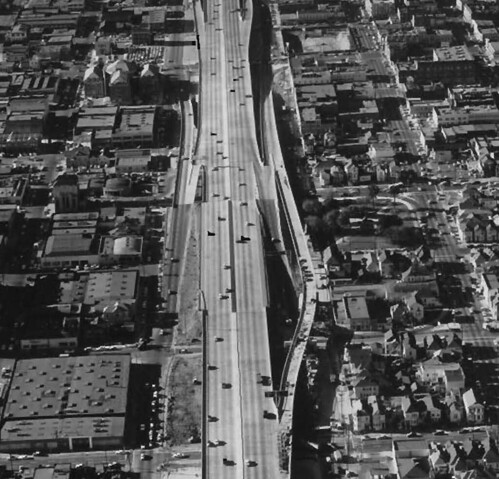





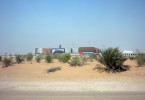
An inspirational interview with a visionary man, which I could tell was also a lot of work. Thank you for your time and wisdom in urging us to live in better ways.
Yes, Marcel is indeed very inspiring. A poet, artist and conscious soul who is lending his spirit to a just earthly cause. I love the way he described how he made some of his decisions in the SF Chronicle article:
“He said his great-grandfather appeared to him there in a dream, telling him to sell the house and use the money to “save” the Bottoms in West Oakland.”
Read more: http://www.sfgate.com/cgi-bin/article.cgi?f=/c/a/2007/01/21/CMG93N6V7B1.DTL#ixzz0R8lRQdPc
Such a positive and optimistic article! It gives hope 🙂
Thank you. We have to have hope to make the world a better place. There’s a positive seed in everything.
Thanks as always for your excellent writing Sven. For keeping it real and for finding the silver lining in the stormcloud that is our corrupt governments and selfish corporations — that stormcloud is large but will never cover even a significant portion of the sky that is humanity’s present and future potential.
You are so right Tony, and this reminds me of one of my favorite lines of Vaclav Havel, the great Czech playwright turned turned dissident turned political prisoner turned sage:
“Hope is not the conviction that something will turn out well, but the certainty that something makes sense regardless of how it turns out.”
Thanks to Tony for his adamantly hopeful outlook. The world needs you!
Pam B
[…] the mental barriers persist long after the shackles have been removed. As I described in Ecocities: From the Bottoms Up, in West Oakland they persist through a history of urban planning that builds a highway right […]
[…] but intellectually from the centers of political power and influence. I wrote about this history in Ecocities: From the Bottoms Up. Next, I got to witness about 25 members of the community collaborate with a group of architects, […]
[…] Some of you may be familiar with my diaries about ecocities. From Venice and Istanbul to West Oakland, I’ve written about urban areas within an ecocity context, and I’m about to launch […]